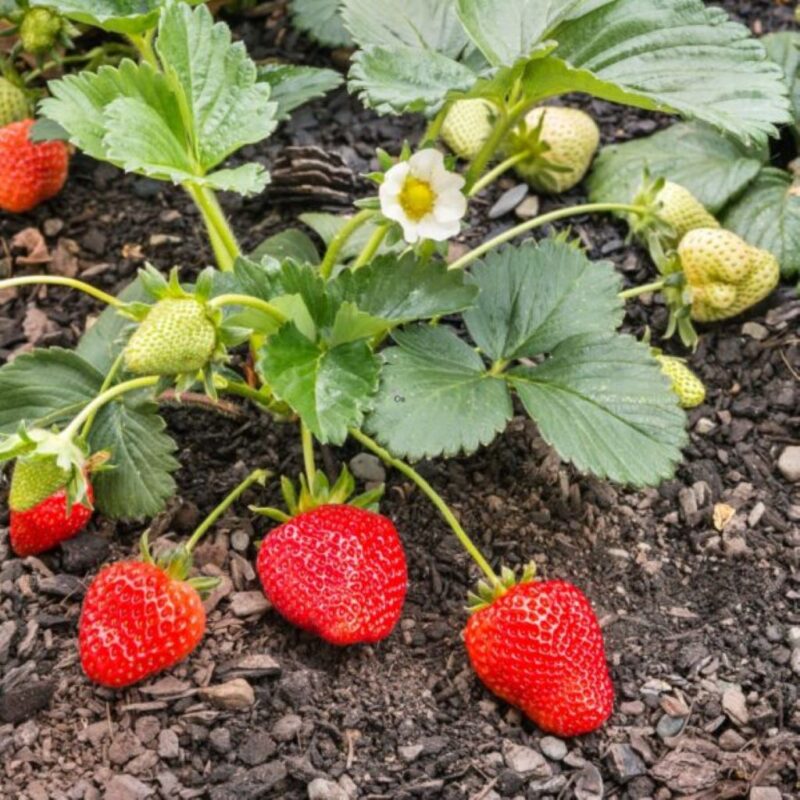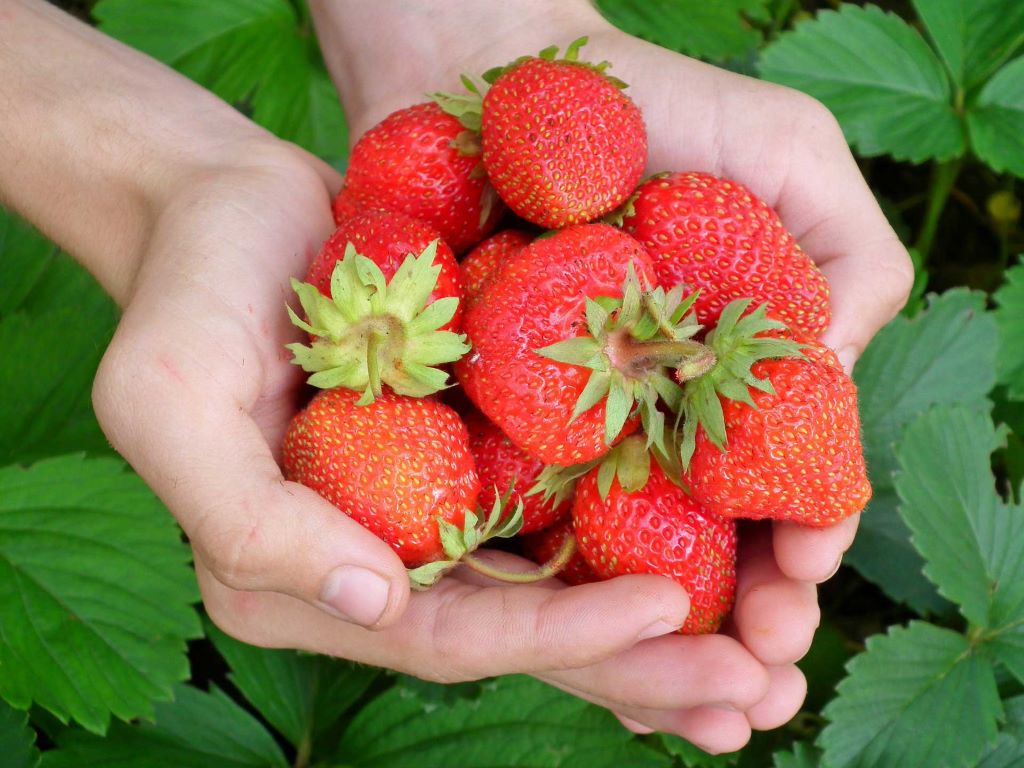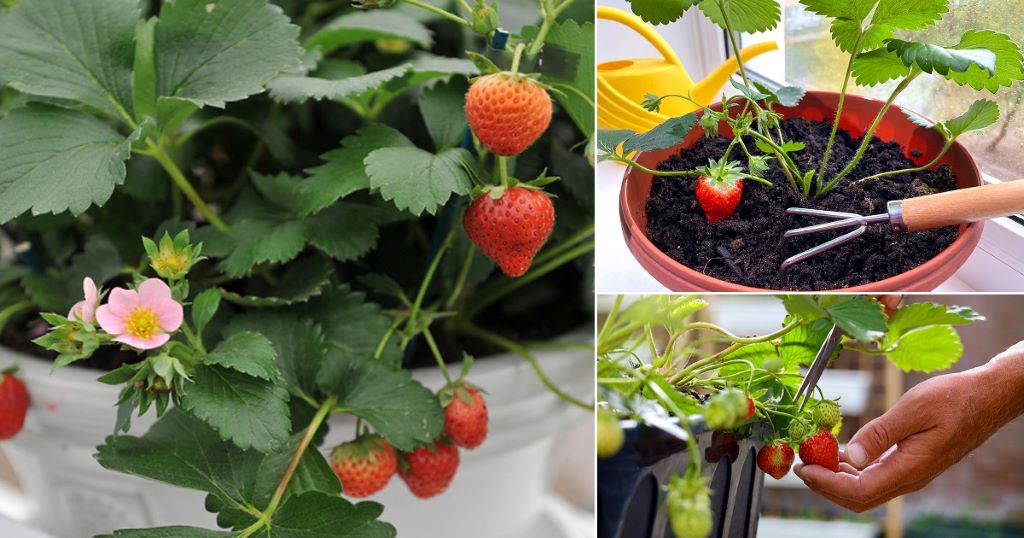Growing strawberries for beginners is a rewarding and enjoyable experience. With proper care and attention, you can successfully cultivate these delicious fruits in your backyard.
By following a few simple steps, you will be on your way to harvesting juicy, homegrown strawberries in no time. We will guide you through the process of growing strawberries from start to finish, covering everything from choosing the right variety to providing the ideal growing conditions.
Whether you have a large garden or limited space, you can still enjoy the taste of fresh strawberries straight from your garden. Let’s get started on your strawberry-growing journey!
Choosing The Right Strawberry Varieties
New to growing strawberries? Selecting the right strawberry varieties is crucial. Look for everbearing or June-bearing types, such as Albion, Seascape, or Earliglow, perfect for beginners. Consider your local climate and available space before choosing the best variety for your garden.
Consider Climate And Growing Conditions
When choosing the right strawberry varieties to grow as a beginner, it’s important to consider the climate and growing conditions of your specific area.
- Strawberries thrive in temperate climates and prefer full sun exposure.
- The soil should be well-draining and rich in organic matter to support healthy growth.
- Take note of the average temperature and frost dates in your region to determine the best planting and harvesting times.
- Consider the amount of rainfall your area receives, as strawberries require consistent moisture but can be susceptible to rot in excessively wet conditions.
In summary, before selecting your strawberry varieties, assess the climate and growing conditions to ensure they align with the needs of the plants.
Evaluate Different Types Of Strawberries
When it comes to choosing the right strawberry varieties for beginners, there are several types to evaluate.
- June-Bearing Strawberries: These varieties produce a single large crop of strawberries in early to mid-summer. Although they have a short harvest period, they often yield larger and more flavorful fruits. They can be an excellent choice if you enjoy making preserves or want to experience the excitement of a bountiful harvest in a short period.
- Everbearing Strawberries: As the name suggests, everbearing varieties bear fruit throughout the growing season, typically in spring, summer, and fall. While the individual berries may be smaller than those of June-bearing varieties, the extended harvest window can provide continuous enjoyment.
- Day-Neutral Strawberries: Similar to everbearing strawberries, day-neutral varieties produce fruit throughout the growing season. They are known for producing a constant supply of berries without the need for long day lengths or specific temperatures.
In conclusion, consider the different types of strawberries available, such as June-bearing, everbearing, and day-neutral varieties, to determine which one suits your preferences and gardening goals.
Preparing The Soil For Planting
Growing strawberries can be an enjoyable and rewarding experience, especially for beginners. However, to ensure that your strawberry plants thrive and produce a bountiful harvest, it is essential to prepare the soil properly before planting. This involves understanding the soil’s pH and drainage, as well as providing the necessary nutrients. In this section, we will discuss these aspects in detail, providing you with all the information you need to create the ideal growing conditions for your strawberries, following the guidelines of https://aliceswonderlandnursery.com/.
Understanding Soil Ph And Drainage
Soil pH refers to the level of acidity or alkalinity in the soil. Strawberries prefer slightly acidic soil, with a pH range of 5.5 to 6.5. This pH range ensures optimal nutrient availability for the plants. You can test your soil’s pH using a soil testing kit available at most garden centers or by sending a sample to a local agricultural extension office.
If your soil’s pH is too high (alkaline), you can lower it by adding organic matter such as compost or well-rotted manure. On the other hand, if the pH is too low (acidic), you can raise it by incorporating lime into the soil. Adjusting the pH to the optimal range will create a favorable environment for your strawberry plants to grow.
Drainage is another crucial factor to consider when preparing the soil for strawberries. Strawberries prefer well-draining soil that allows excess water to flow away, preventing root rot and other water-related issues. If your soil tends to be heavy and retains water, it may be necessary to improve its drainage.
One way to improve drainage is by working organic matter into the soil. This can include compost, leaf mold, or well-rotted bark. These organic materials help break up compacted soil and allow water to flow freely. Additionally, you can create raised beds or mounds for planting strawberries, ensuring that excess water drains away more efficiently.
Adding Necessary Nutrients
Strawberries have specific nutrient requirements for healthy growth and fruit production. Before planting, it is essential to ensure that the soil contains adequate nutrients for the plants. Typically, a balanced fertilizer with an NPK (nitrogen, phosphorus, and potassium) ratio of 10-10-10 or 14-14-14 is suitable for strawberries.
| Nutrient | Function | Sources |
| Nitrogen (N) | Supports leaf and stem growth | Compost, manure, fish emulsion |
| Phosphorus (P) | Promotes root development and flower production | Bone meal, rock phosphate |
| Potassium (K) | Aids in overall plant health and fruit quality | Wood ash, kelp meal, granite dust |
- Before planting, apply the fertilizer according to the package instructions, ensuring even distribution.
- Avoid applying excessive amounts of fertilizer, as this can harm the plants and negatively impact fruit production.
- If your soil lacks organic matter, consider incorporating compost or well-rotted manure to improve nutrient content and soil structure.
By ensuring proper soil preparation, including understanding soil pH and drainage, and providing the necessary nutrients, you are on the right path to growing healthy and productive strawberry plants. The effort invested in preparing the soil will pay off in the form of abundant and flavorful strawberries. In the next section, we will discuss the best methods for planting strawberry plants in the prepared soil.
Planting Strawberries
When it comes to planting strawberries, there are a few important factors to consider to ensure a successful harvest. From deciding between container and ground planting to ensuring proper planting depth and spacing, these considerations play a crucial role in the health and yield of your strawberry plants.
Deciding On Container Vs. Ground Planting
Before you begin planting your strawberries, it’s important to decide whether you want to plant them in containers or directly in the ground. Container planting is ideal for those with limited space or for individuals dealing with poor soil quality. On the other hand, ground planting offers the advantage of providing a more natural environment for the plants to thrive. Consider the specific needs of your gardening space and the level of maintenance you are willing to commit to when making this decision.
Proper Planting Depth And Spacing
Whether planting in containers or directly in the ground, ensuring the proper planting depth and spacing is crucial for the healthy growth of your strawberry plants. When planting, make sure to set the root ball at the correct depth, usually to the level it was previously growing, and space individual plants approximately 12 to 18 inches apart. This allows the plants to receive adequate sunlight, airflow, and room for their root systems to develop, ultimately leading to a bountiful harvest.
Caring For Your Strawberry Plants
Learn the essential steps for growing strawberries as a beginner. Discover how to care for your strawberry plants with these helpful tips to ensure a successful harvest.
Watering And Fertilizing
Keeping your strawberry plants properly watered is essential for their growth and productivity. These plants need regular but moderate watering to thrive. A good rule of thumb is to provide about 1 inch of water each week, either through rainfall or manual irrigation. When watering, make sure to soak the soil deeply without creating waterlogged conditions.
To avoid wetting the foliage, it’s best to direct the water towards the base of the plants. This helps prevent the development of fungal diseases. Overhead watering should be avoided, as it can increase the risk of powdery mildew and other leaf diseases.
In addition to watering, fertilizing your strawberry plants is crucial to ensure healthy growth and plentiful yields, particularly when growing strawberries in pots. Strawberries are heavy feeders and require regular nutrient replenishment. Before planting, prepare the soil with well-rotted organic matter, like compost, to provide a fertile environment for the plants.
Once the plants are established, you can apply a balanced fertilizer with equal proportions of nitrogen (N), phosphorus (P), and potassium (K). It’s recommended to use a slow-release fertilizer to provide a continuous supply of nutrients over time. Apply the fertilizer according to the manufacturer’s instructions, usually around the base of the plants, and water it in a well. Remember to avoid over-fertilization, as it may lead to excessive vegetative growth at the expense of fruit production.
Controlling Pests And Diseases
Strawberry plants are susceptible to various pests and diseases, but with proper care and preventive measures, you can keep these problems at bay. Implementing good garden hygiene practices can significantly reduce the risk of pests and diseases.
First and foremost, it’s important to regularly inspect your plants for any signs of infestation or disease. By catching the problem early on, you can prevent it from spreading and causing extensive damage. Remove any affected leaves, flowers, or fruits promptly to prevent the issue from worsening.
Pests: One common pest that affects strawberry plants is the strawberry aphid. These tiny insects suck the sap from the plants, leading to stunted growth and distorted leaves. You can control aphids by introducing natural predators like ladybugs or by using organic insecticides.
Diseases: Gray mold and powdery mildew are two fungal diseases commonly encountered in strawberry plants. To prevent these diseases, ensure proper air circulation around the plants by spacing them adequately. In case of an outbreak, remove and destroy the infected plant parts and consider using fungicides as a last resort.
By following these recommendations for watering, fertilizing, and pest and disease control, you can provide the optimal care that your strawberry plants need. Remember that consistency and attention to detail are key to successful strawberry cultivation. Happy growing!
Harvesting And Enjoying Your Strawberries
Discover how to grow strawberries for beginners and savor the satisfaction of harvesting and enjoying your own delicious, juicy berries. Master the basics of strawberry cultivation with our simple and practical tips.
Knowing When To Harvest
Harvesting strawberries at the right time is crucial to ensure that you enjoy their full flavor and sweetness. It’s important to wait until the berries are fully ripe before picking them. To determine if your strawberries are ready to be harvested, look for the following signs:
- Bright red color: The strawberries should have a vibrant red hue all over.
- Firmness: Gently press the berries to check if they have a firm texture.
- Sweet aroma: Ripe strawberries emit a delightful fragrance.
- Easily detach from the stem: The berries should come off the plant easily when picked.
By waiting until these signs are present, you can ensure that you savor the juiciest and most flavorful strawberries possible.
Delicious Ways To Enjoy Your Homegrown Strawberries
Now that you have harvested your strawberries, it’s time to indulge in their mouthwatering taste. Here are some delectable ways to enjoy your homegrown strawberries:
- Enjoy them fresh: There’s nothing quite like biting into a plump, ripe strawberry straight from the garden. Their natural sweetness is simply irresistible.
- Create strawberry desserts: From strawberry shortcake to strawberry cheesecake, the possibilities are endless when it comes to satisfying your sweet tooth with these luscious berries.
- Add them to salads: Toss fresh strawberries into your favorite salad for a burst of freshness and a pop of color.
- Make homemade strawberry jam: Preserve the flavor of your strawberries by turning them into a delightful jar of homemade jam.
- Blend them into smoothies: Whip up a nutritious and refreshing smoothie by blending strawberries with your favorite fruits and yogurt.
No matter how you choose to enjoy your strawberries, one thing is for sure – their incredible taste will leave you wanting more. So, go ahead and get creative in the kitchen with your bountiful harvest!
Frequently Asked Questions For Growing Strawberries For Beginners
How Do I Start Growing Strawberries?
To start growing strawberries, choose a sunny spot with well-draining soil. Prepare the soil by removing weeds and adding compost. Plant the strawberry plants, spacing them about 12 inches apart. Water regularly and mulch to retain moisture. Harvest ripe strawberries when they are firm and fully red.
What Are The Best Strawberry Varieties For Beginners?
For beginners, it’s recommended to start with easy-to-grow strawberry varieties such as ‘June-bearing’ or ‘Everbearing. ‘ ‘June-bearing’ strawberries produce a single large crop in early summer, while ‘Everbearing’ varieties produce two smaller crops, one in early summer and another in early fall.
Look for varieties that are disease-resistant and suitable for your climate.
How Often Should I Water Strawberries?
Strawberries need consistent moisture, so water them regularly, especially during dry periods. Check the soil moisture by sticking your finger into the soil up to your second knuckle. If it feels dry at that depth, it’s time to water. Aim to give them about 1 inch of water per week, either through rainfall or irrigation.
Conclusion
In growing strawberries, patience and care are key. With the right knowledge and techniques, anyone can enjoy the sweet taste of homegrown strawberries. Explore our top ten gardening ideas, tips, and tricks to transform your green space; remember to choose a sunny spot, provide adequate nutrients, and stay vigilant against pests. By following these tips, even beginners can master the art of growing strawberries and savor the fruits of their labor.



